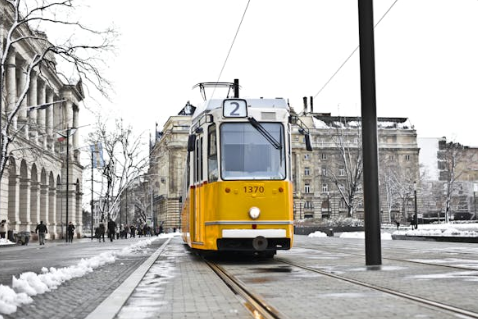
Let’s be honest: the idea of traveling more consciously sounds great in theory. But the moment you start looking into eco-lodges, carbon offsets, or low-impact transportation, it can quickly start to feel expensive, complicated, and out of reach.
The good news? You don’t need to fly business class on a hybrid plane, eat nothing but foraged kale, or book $400-a-night “eco” hotels to make a difference. Traveling with care isn’t about perfection — it’s about doing a bit better, wherever you are and whatever your budget.
In fact, a lot of small adjustments that are better for the planet are also better for your wallet, your experience, and your peace of mind.
Here’s how to travel with a lighter footprint — without spending more.

1. Rethink Your Destination, Not Your Dreams
You don’t need to fly across the globe to have an adventure.
Staying closer to home can lower your costs, reduce emissions, and still deliver something meaningful. You’re not “settling” — you’re just shifting focus.
Instead of:
- Flying 10+ hours for a five-day getaway…
Try: - Exploring somewhere within a 3–5 hour radius (train, carpool, or bus).
Regional travel is often overlooked — but it’s full of hidden gems, rich culture, and less-touristed spots that let you travel deeper, not just farther.
Plus, traveling where fewer people go often supports local economies that really need it.
2. Travel Slower — It’s Cheaper and Gentler
The rush-through-it-all approach to travel doesn’t just wear you out — it’s also resource-heavy and expensive.
Instead of:
- Cramming three cities into one week…
Try: - Spending longer in one place, even if it means skipping the rest.
When you slow down:
- You take fewer flights and transfers (lower emissions).
- You avoid impulse spending from constant movement.
- You get to know a place better, which often leads to more local choices and less waste.
In most cases, slower travel also leads to deeper memories — and less burnout.
3. Choose Public Transport Over Rental Cars
Sure, rental cars give you flexibility. But they also come with high costs, emissions, and the stress of navigating new roads.
In many parts of the world, local transport is not only cheaper — it’s also an experience in itself.
Instead of:
- Renting a car for the whole trip…
Try: - Trains, buses, ferries, tuk-tuks, bikes, shared vans — whatever locals use.
You’ll spend less, meet more people, and get a real feel for the rhythm of the place.
Bonus: you won’t be contributing to traffic or the growing environmental burden of individual vehicles.

4. Bring Reusables — and Use Them
This one’s simple but easy to forget. A few small items in your bag can dramatically cut down your waste while traveling:
- A reusable water bottle (many airports now have refill stations)
- A cloth tote for groceries or souvenirs
- A metal or bamboo utensil set
- A compact coffee cup or thermos
Instead of:
- Buying bottled water and takeaway containers multiple times a day…
You: - Refill, reuse, and reduce single-use plastic while saving a surprising amount of money.
These items pay for themselves quickly and lighten your footprint everywhere you go.
5. Stay Where Your Money Stays Local
Big hotel chains may be convenient, but they often siphon money away from the local community — especially in tourist-heavy regions.
Instead of:
- Booking international chains or resorts…
Try: - Locally owned guesthouses, family-run B&Bs, or apartments on trusted platforms.
Not only is this usually more affordable, but your money directly supports real people, not just corporations. You’re also more likely to get personalized tips, homemade meals, and a window into everyday life.
It’s not about roughing it. It’s about redirecting your dollars with intention.
6. Eat Like You Actually Want to Taste the Place
Chain restaurants, imported goods, and familiar foods are often pricier, more packaged, and a missed opportunity.
Instead of:
- Grabbing fast food or eating only what you know…
Try: - Local markets, street food stalls, or small, family-run eateries.
You get:
- A more affordable dining experience
- Less packaging and food transport emissions
- A better connection to culture and tradition
Even better: bring your own container or cup when you can. You’d be surprised how often vendors are happy to use it.
7. Mind the Flights — But Don’t Obsess
Flights are a major part of most travel emissions. That’s a fact. But not flying at all isn’t realistic for everyone.
Instead of feeling guilty, make smarter choices where you can:
- Fly direct when possible (takeoffs and landings burn the most fuel)
- Pack lighter (every kilo counts)
- Avoid short-haul flights that could be done by train or bus
And when you do fly, make the trip count. Stay longer, explore deeper, and minimize how often you’re flying back and forth.
It’s not about avoiding air travel entirely — it’s about flying with more intention.
8. Avoid the “Souvenir Trap”
You don’t need to buy something in every airport shop or souvenir stand. Most of those trinkets are mass-produced, overpriced, and quickly forgotten.
Instead:
- Support local artists or makers (if you’re buying something, let it mean something)
- Pick up one item that reflects a real memory — not a marketing checklist
- Or simply bring home a story, a photo, a recipe
Less clutter. More connection.
And if you’re traveling often, it helps keep your home (and your suitcase) from filling up with things you didn’t really need in the first place.
9. Think Before You Book a Tour
Some guided experiences are meaningful. Others are just tourist traps with a nice brochure.
Before booking, ask yourself:
- Is this experience respectful of local culture?
- Are animals, people, or environments being exploited for entertainment?
- Does the money go back to the community?
Often, smaller or community-run experiences cost the same (or less) and give you a more authentic experience.
You don’t need to pay for a “sustainable” tour — just one that’s thoughtful and fair.
10. Pack With Purpose
Overpacking adds weight (literally and mentally). It can also tempt you to consume more once you arrive — buying things you forgot or didn’t plan for.
Instead:
- Pack versatile, season-appropriate clothes you already own
- Bring travel-sized toiletries in reusable containers
- Leave room for laundry — not endless outfit changes
The goal isn’t to be minimalist for its own sake. It’s to reduce friction, waste, and impulsive spending.
Travel light. Move freely.

Final Thought: Travel Isn’t About Perfection — It’s About Presence
The truth is, traveling “better” doesn’t mean doing everything right. It means paying attention. It means asking, What impact am I leaving — and is that what I want?
Small changes add up. And most of them aren’t about spending more — they’re about being more aware, more flexible, and more connected to the places and people around you.
You don’t need to be perfect. You just need to care a little more than yesterday.
That alone goes a long way.



